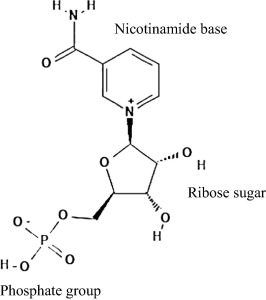Nicotinamide Mononucleotide (NMN) as an Anti-Aging Health Product:
Promises and Safety Concerns

The global elderly population is on the rise, leading to an increased demand for anti-aging health products to address age-related complications and promote longevity. Among these products, Nicotinamide Mononucleotide (NMN) has garnered significant attention from both consumers and the scientific community. This article aims to provide an overview of the promises and safety concerns associated with NMN as an anti-aging health product.
Promises of NMN as an Anti-Aging Product
Nicotinamide adenine dinucleotide (NAD+) levels the body decline with aging, contributing to reduced energy production in mitochondria, oxidative stress, DNA damage, cognitive impairment, and inflammatory conditions. NMN, as a precursor of NAD+, has shown promise in slowing down this aging process by elevating NAD+ levels in the body. In vivo studies have indicated affirmative results of therapeutic effects for various age-induced complications with NMN supplementation.
* NMN administration enhances NAD+ levels, insulin secretion, insulin sensitivity, and lipid profile in age-induced type 2 diabetic mice.
* NMN supplementation restores gene expression linked to circadian rhythm, inflammatory response, and oxidative stress.
* NMN supplementation improves hepatic insulin sensitivity
The promises of NMN as an anti-aging product lie in its potential to replenish NAD+ levels, mitigate age-related decline in cellular function, and contribute to overall health and longevity. However, it is essential to note that further research, particularly comprehensive clinical safety and efficacy studies, is needed to validate these promises and address safety concerns associated with NMN supplementation
Safety Concerns of NMN
While in vivo studies have supported the beneficial effects of NMN, there is a lack of clinical safety and efficacy studies. Only one preclinical and one clinical study have been conducted to investigate the safety concerns of NMN administration, with a few more human clinical trials underway. This highlights the urgent need for proper clinical investigations to assess the effectiveness and safety of NMN supplementation .
* Currently, there is a scarcity of clinical evidence to support the safety and effectiveness of NMN on human physiology.
* Long-term effects of NMN supplementation on human health remain unclear.
* Potential adverse effects and interactions with other forms of nicotinamide, such as nicotinamide riboside (NR) and niacin, need to be addressed through further research.
The lack of comprehensive clinical safety and efficacy studies necessitates further research to establish the safety and effectiveness of NMN supplementation. Proper clinical investigations are crucial to validate the promises of NMN and provide valuable insights for consumers and the scientific community

Mechanism of Action
NMN acts as a precursor to NAD+, a crucial molecule involved in various cellular processes, including energy metabolism, DNA repair, and gene expression. By replenishing NAD+ levels, NMN may help mitigate age-related decline in cellular function and contribute to overall health and longevity.
* NAD+ levels decrease with aging due to NAD+ consuming enzymes, such as sirtuins, CD38/CD157, poly (ADP-ribose) polymerase (PARP), BST, and tankyrase (TNKS). NMN supplementation can compensate for this decline and contribute to NAD+ biosynthesis .
NMN works to combat aging by elevating NAD+ levels in the body, which may help mitigate age-related decline in cellular function and contribute to overall health and longevity. However, further research is needed to establish the effectiveness and safety of NMN supplementation, particularly in a clinical setting.
References
1. Lu J, et al. (2022) “Nicotinamide Mononucleotide (NMN) as an Anti-Aging Health Product: Promises and Safety Concerns.” Journal of Advanced Research 37: 267–278. doi: 10.1016/j.jare.2021.08.003
2. Yamamoto T, et al. (2014) “Nicotinamide mononucleotide, an intermediate of NAD+ synthesis, protects the heart from ischemia and reperfusion.”
3.Rea IM, et al. (2018) “Age and age-related diseases: role of inflammation triggers and cytokines.”
